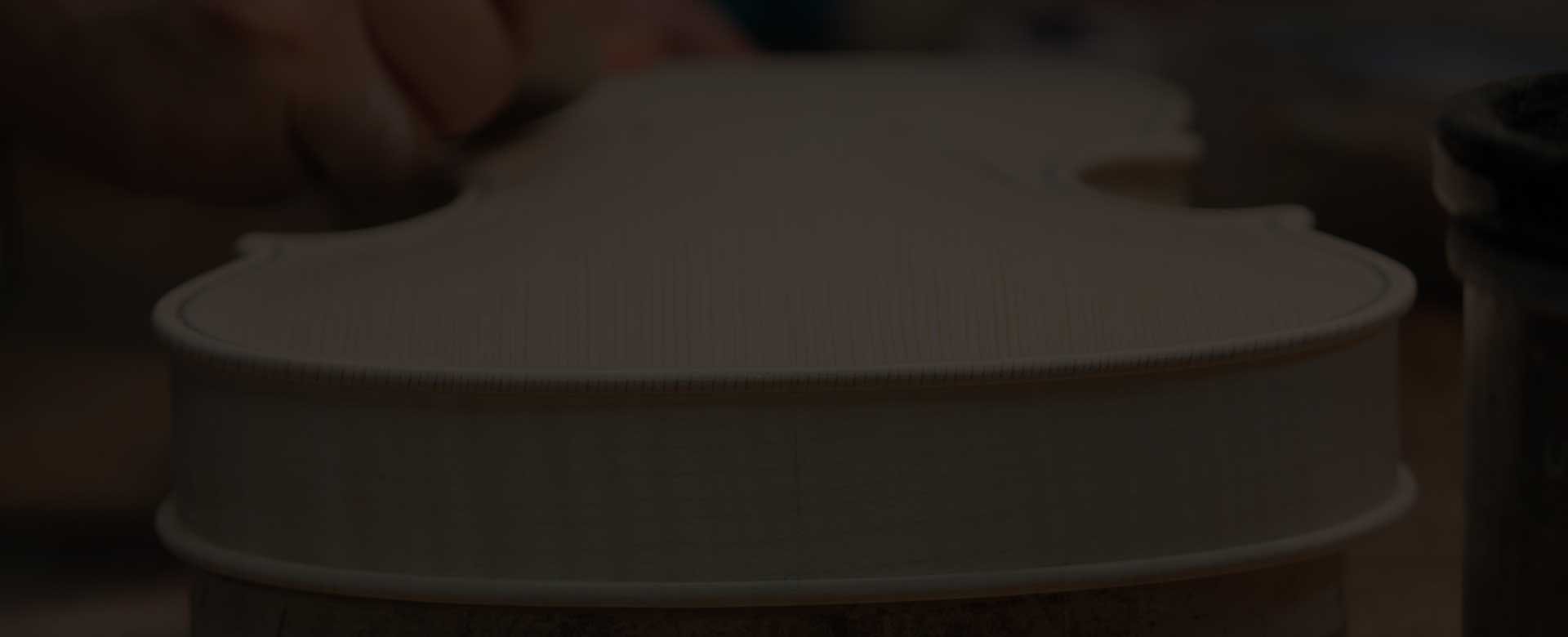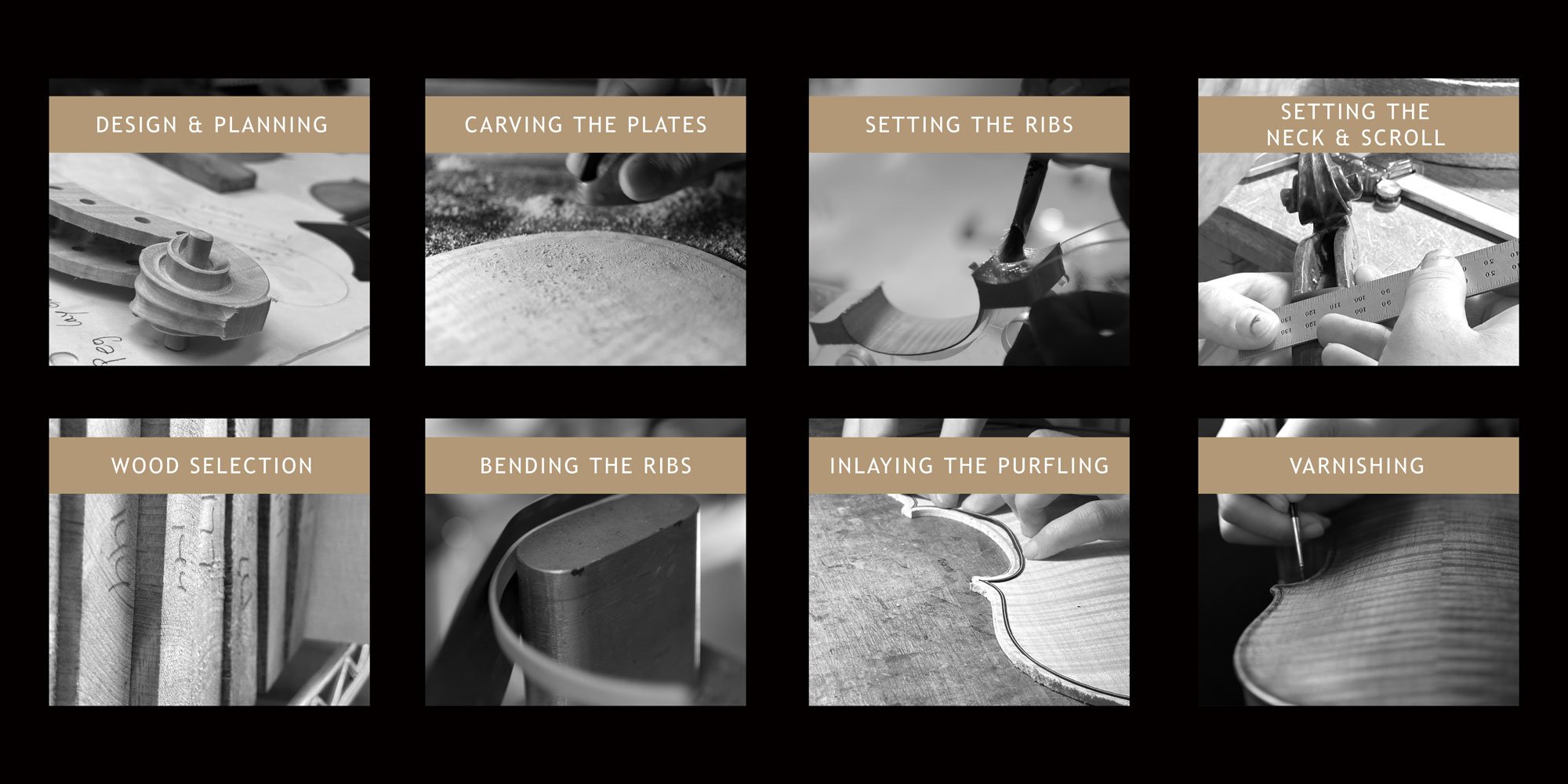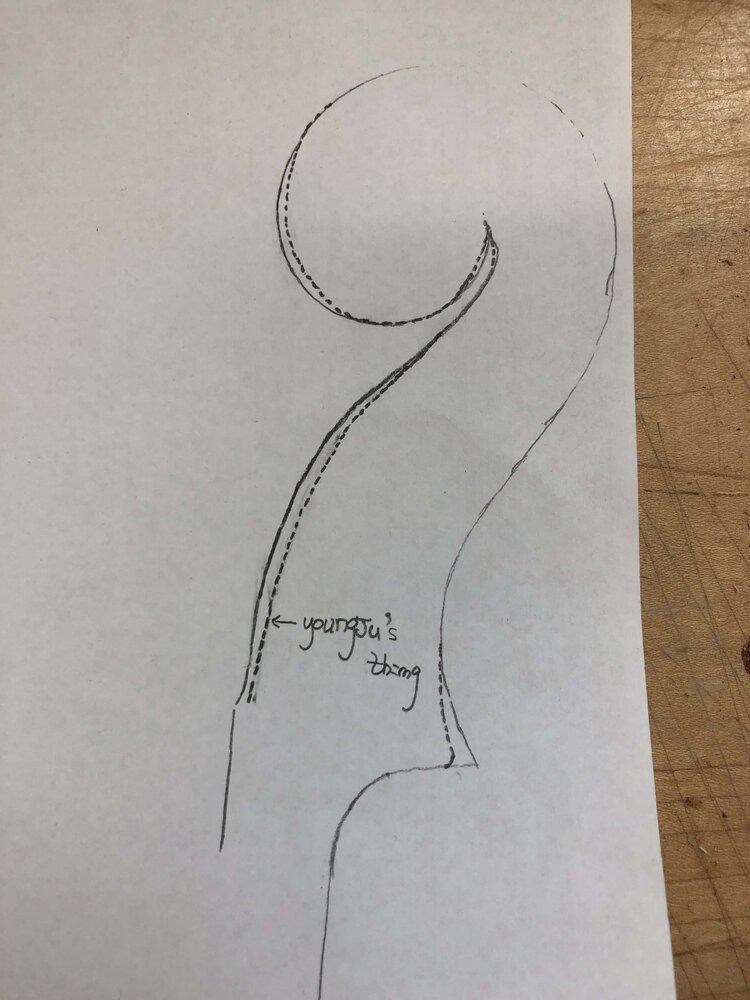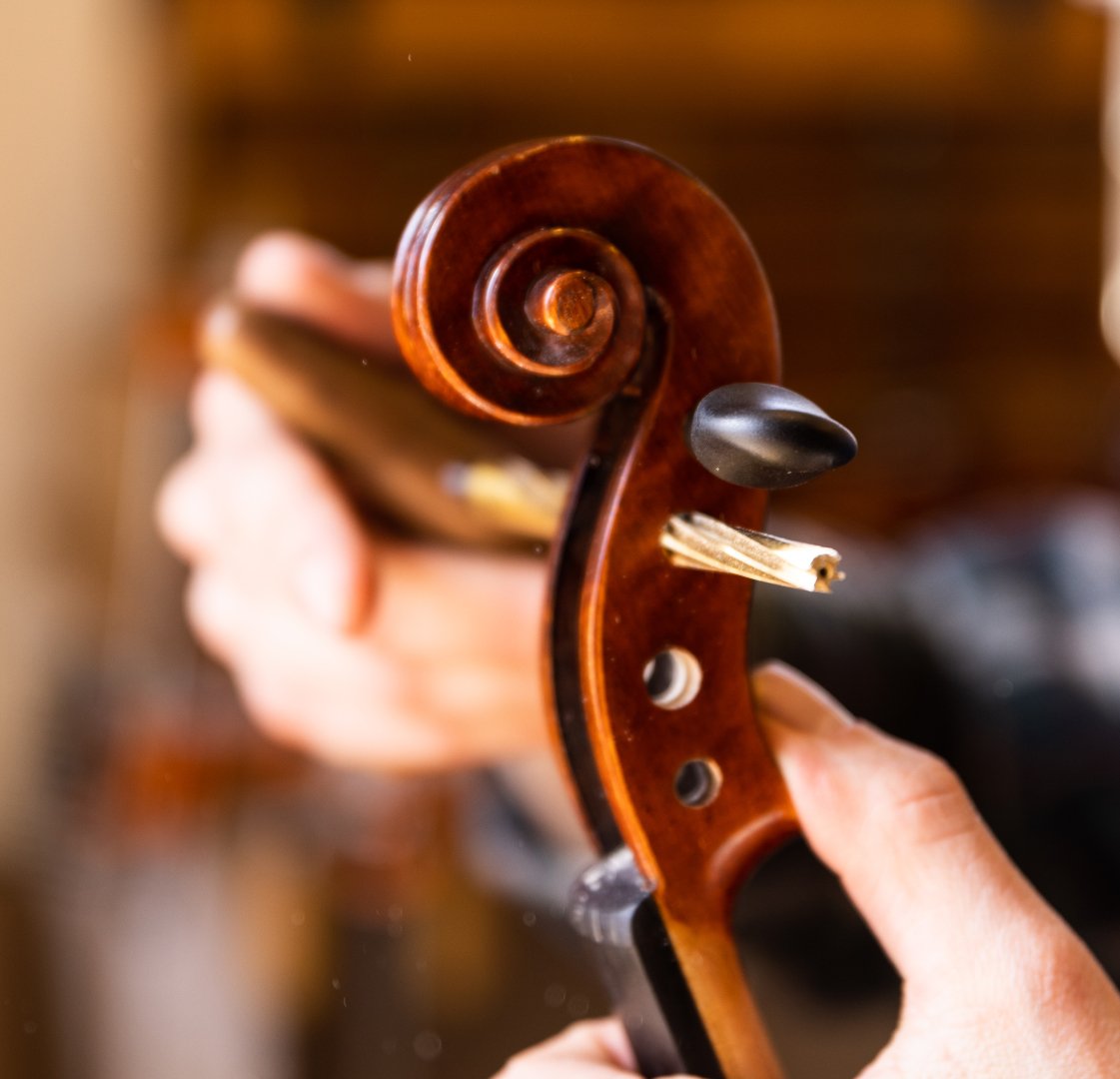The heart of instrument making — hands shaping sound

100% MADE IN VERMONT
V. RICHELIEU VIOLINS & VIOLAS
Discover the Mastery: Take a Virtual Tour into the Making of V. RICHELIEU™ Instruments
Experience the artistry behind our exceptional V. RICHELIEU™ instruments! Step into our world where each instrument is meticulously crafted, blending the finest materials and unparalleled craftsmanship. We invite you to witness the magic of our creation process firsthand.
Simply fill out the form below, and our dedicated staff will be delighted to arrange a captivating online Facetime workshop tour exclusively for you. Get ready to embark on a journey that unveils the secrets of instrument-making excellence right here in the USA!
MAKING THE V. RICHELIEU VIOLINS & VIOLAS IN BURLINGTON, VERMONT (USA)
Take a Pictorial and Video tour below and see how we make our V. RICHELIEU™ instruments. Each instrument is carefully planned and executed, bringing the finest materials and highest craft to bear in creating instruments that succeed as a player’s choice.
HERE’S HOW WE DO IT. HERE’S HOW VIOLINS ARE MADE!
DESIGN & PLANNING
Before we started building V. RICHELIEU™ instruments, we thought hard about what we wanted them to be. Studying the old masters and listening to the tones generated by different instruments and of course considering what we, our luthiers, personally enjoy we were able to come up with designs that work.
With over 25 years of retail experience, we also have a good idea of what players of all levels are looking for.
And for our Small Violas, we worked especially hard to come up with small patterns that really capture the viola sound. Moving away from violin design, we took viola patterns and made them work for small hands - work physically, but also tonally so the small violas could sound and play like true violas without compromise.
Even small changes in design can yield large differences in tone and handling. Reducing weight in the scroll, for example, increases tone and makes a viola easier to play. The design changes need to be done at the onset of planning to keep the making process as efficient as possible!
WOOD SELECTION
Perhaps the most important decision is what wood to use to build a V. Richelieu instrument?
In doing our research, we learned a lot about how wood varies in terms of density and wood grain. We learned that split wood yields better results than (the more common) sawn wood and some species are better geared for violas than violins (and vice versa).
We also know that how wood is taken affects how they will ring. Deforestation and environmental concerns are of course huge issues for us too as we do not want music to come at a cost to our planet.
Our forestry partners in Europe range from the Italian Alps, the Swiss Alps and the Bosnian mountains. Spruce and Maple, and some Poplar, are carefully selected by foresters that are attentive to bio-dynamic or sustainable forestry practices and, more recently, we have partnered with Vermont foresters who practice sustainable forestry in the spruce and maple woods here at home.
No one wood serves perfectly for all instruments.
NOT ALL WOOD SOURCES ARE ALIKE
Logging for Tonewood is very different from other sorts of logging. Only particular trees can work for violins and violas, so the foresters we work with log exclusively for tonewood destined for instrument making across the globe.
We have worked with our suppliers to teach them what we want. They know us, and we know them!
AND… CAREFUL MEASUREMENTS!
Each Piece of tonewood we receive is carefully tested for its acoustical properties. We evaluate sonic speed using electronics specifically designed to determine a material’s tonal response. Based on these measurements, we can select wood that would be best for viola, violin, small violas or small violins.
CARVING THE PLATES
As each plate, top and back, are carved, careful attention is placed on getting the measurements exact.
No two instruments are alike. The Luthiers must adjust the “graduations” (plate thicknesses) to account for variances in each piece of wood. The ultimate tone of the instrument is dependent on the maker using a combination of science and art to create exactly the final product desired.
BENDING THE RIBS
The ribs of the V. Richelieu instruments are hand-bent on a heating iron to form the outline. The internal forms define the pattern of the instrument often based on an Italian Master like Stradivari or Guarneri. The internal blocks and ribs are put together on the form, the complete plates are attached and the form is removed…to be used again for another instrument!
INLAYING THE PURFLING
The black outline of the V Richelieu instruments is called the purfling and iti s an inlay carefully installed. In addition to providing a visual frame to the artistic design, the purfling also helps prevent cracks from developing in the plates by protecting the endgrain from splits. The unique double-line is a signature feature of the violin family.
SETTING THE NECK & SCROLL
Setting the Neck and Scoll of a V. Richelieu instrument is a meticulous process. The measurement of the angles have to be exact to yield a perfectly centered neck and fingerboard, risen to a precise angle of projection over the topplate and tilted perfectly to enhance the bowing experience.
Not only exact tool work is required, but an analytical mind!
VARNISHING THE V. RICHELIEU
Why do Stradivari instruments sound so good? It’s the mystery of the ages, but the varnish has to be part of the equation! There are essentially two kinds of varnish formulas: oil and spirit, but the V. RICHELIEU™ instruments are varnished exclusively in a multi-layered oil varnish. Oil is hard to work with: it is expensive and difficult to make (we make our own!). Drying times are far longer than spirit and while color pigment dissolves in spirit it is suspended in oil. But oil acts like a bladder encasing the instrument so it breathes as the instrument vibrates. As air moves in and out of the violin, the oil allows for expansion of the instrument so the tone is richly enhanced. We don’t know how Stradivari made his varnish, but whatever he did, it worked. We have our own formula for our varnish and the results are spectacular, both visually and aurally!
VARNISHING
A rich oil varnish is applied by hand to each V. RICHELIEU™ that is made!
THE V. RICHELIEU VARNISH IS UNIQUE
We make our varnish in small batches using prime colors and materials to effect the perfect blend of color, protection, and light refraction. It’s a complicated process and has come after a lot of trial and error.
The rich translucency of the varnish that protects and gives luminosity to the wood is achieved through the careful application of varnish, by hand, over several layers. Once each layer is completed, the V. Richelieu instrument is set in an Ultra-Violet lightbox for accelerated drying where it awaits application of the next layer.
THE FINAL SETUP & ADJUSTMENT
Cutting the bridge, installing the soundpost and pegs, and stringing her up. These steps are critical. A great instrument can be completely undermined by a poor setup.
The V. RICHELIEU™ instruments are set up using the finest materials for professional performance.
We use Wittner Perfection Pegs, Top-quality Aubert French bridges, Peter Infeld Strings, and most fingerboards are crafted from an ebony-alternative, Sonowood.















